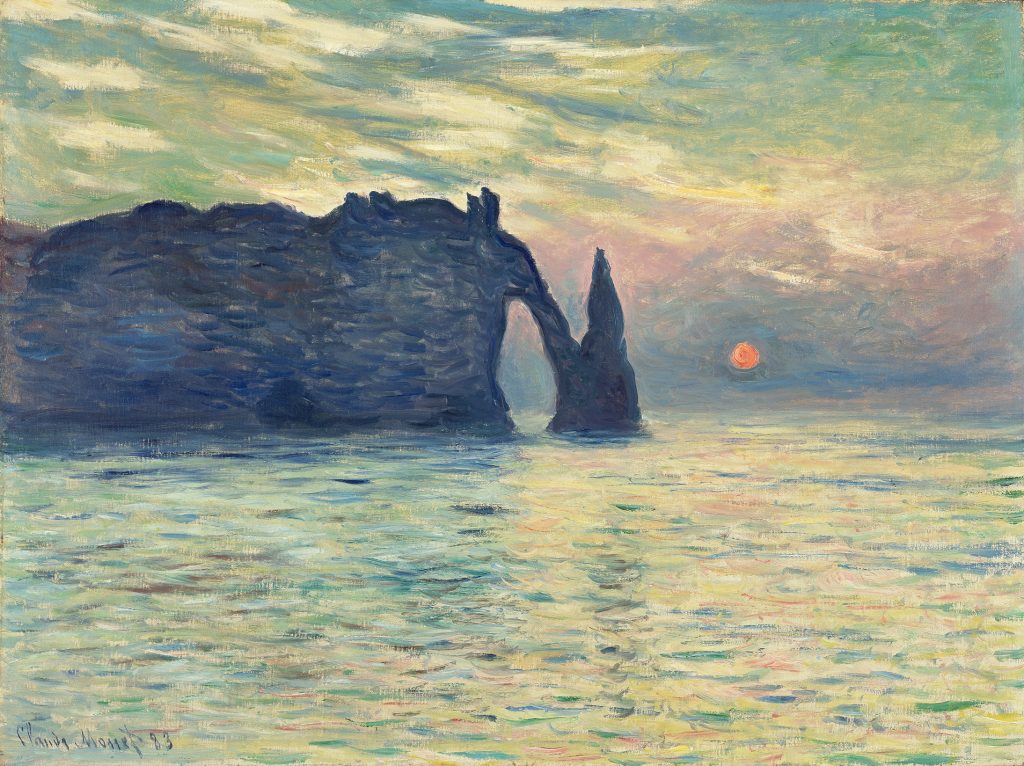Activity Idea: The Cliff, Étretat, Sunset (Quick Tip)
Use the following strategies with Claude Monet’s The Cliff, Étretat, Sunset
Clouds, Clouds, and More Clouds
Identify the type of clouds in The Cliff, Etretat, Sunset. (cirrus) Discuss the ways Monet communicates information about the clouds using paint. (brushstroke, color of cloud and sky) Choose another type of cloud to paint. Determine the colors and brushstrokes you will need to use to reproduce the cloud type. Display the paintings in the classroom and have students identify the cloud type in each of the paintings.
Complementary Colors
Define the term complementary. Identify complementary colors on a color wheel. Locate red on a color wheel. Which color is directly across from red? (green) Which colors are next to red? (red-violet, red-orange) Cut out two red circles. Place one circle on a square piece of green paper. Place the other circle on red-violet or red-orange. Which combination of colors is more intense? Why do you think artists and designers use complementary colors in their works of art?
A Sunset Poem
Write a poem while you observe a sunset. Use language and a poetry form that captures what you see and the transience of the moment. Compare these poems to The Cliff, Etretat, Sunset and/or other works by Impressionists. Discuss the challenges you faced when attempting to capture a fleeting moment.
Effects of Erosion
The cliffs at Etretat are limestone formations. Investigate properties of limestone. How easily does it erode? What forces have shaped the cliffs? What do you think the Porte d’Aval looked like one thousand years ago? Find recent photographs of the cliffs by doing an image search. Identify changes between the recent photos and Monet’s view of the cliffs. What do you think has happened over the last 125 years? Create an image inspired by Monet that predicts how the cliffs might appear in another thousand years.
Prisms and Palettes
Shine light through a prism. What colors do you see? In what order do those colors appear? Investigate the way our eye perceives color. Define the terms light wavelength, light frequency, reflected/absorbed light. Discuss how the impressionist palette (on page 8 of this PDF) is like a prism. Explain why the green paint the impressionists used, which the artist got directly from a tube, would look greener than a green paint that was created by mixing blue and yellow paints.

